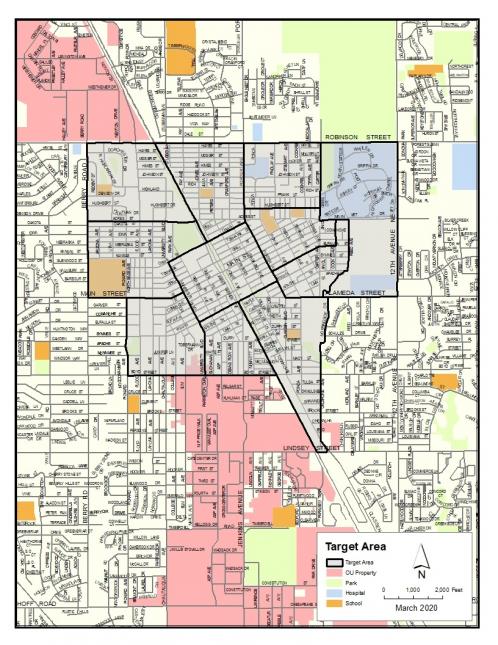About
The Community Development Block Grant (CDBG) Program and the HOME Investment Partnership are grant programs funded by the U.S. Department of Housing and Urban Development (HUD). This provides communities with resources to address a wide range of unique needs such as rehabilitation of housing, acquisition and development of affordable housing, homelessness prevention and assistance, and neighborhood projects.
CDBG Target Areas

Grant Programs
Housing Rehabilitation Programs
The City of Norman's Housing Rehabilitation Programs are funded by the U.S. Department of Housing and Urban Development (HUD) through the Community Development Block Grant (CDBG) program and the HOME program. These programs have funded over $4,000,000 of rehabilitation work in Norman since 1977. These programs offered are Deferred Payment Loan for Rehabilitation, a Deferred payment Loan for Emergency Repair, and a Deferred Payment Loan for Accessibility Modifications; a Grant for Renter-Occupied Accessibility Modifications or Non-Profit Agency Accessibility Modifications. An applicant must meet the income guidelines for that program as well as other qualifications specific to each particular program.
Continuum of Care
The United States Department of Housing and Urban Development (HUD) introduced the Continuum of Care (CoC) Planning Process in 1994. This community-based planning process identifies, prioritizes and works to meet the housing and supportive services needs of homeless individuals and families to include Transitional Housing, Permanent Supportive Housing, and Rapid Re-Housing.
The City of Norman is a member of the OK 504 Norman/Cleveland County Oklahoma Continuum of Care. For more information please see the website.
Section 3 Overview
Each year, HUD invests billions of federal dollars into distressed communities across the country for projects. Projects include:
- Building and rehabilitating housing
- Improving a variety of infrastructures
- Building community centers
- Helping families achieve stability and advancement
The Section 3 program requires recipients of HUD funding to direct employment, training, and contracting opportunities to low-income individuals and the businesses that employ these persons within their community. Section 3 is a provision of the HUD Act of 1968 and is found at 12 U.S.C. 1701u. The regulations are found at 24 CFR Part 75.
Per this statutory language, recipients of HUD funds (i.e. grantees and contractors) ensure that “to the greatest extent feasible,” when certain HUD funds are used to assist housing and community development projects, preference for construction-related training, jobs, and contracting opportunities go to low- and very-low income people and to businesses that are owned by low- and very-low income persons or businesses that hire them. These opportunities are both gender and race neutral.
